New report leverages the BrightEdge Generative Parser™ to provide an in-depth understanding of SearchGPT, and comparison to Google AIO and Perplexity.
SAN MATEO, Calif., Aug. 22, 2024 (GLOBE NEWSWIRE) — BrightEdge, the global leader in AI-driven organic search, content, and digital marketing automation, today published The Ultimate Guide to SearchGPT. The guide includes first-ever insights on OpenAI’s newly announced search engine, SearchGPT, currently in a prototype phase and undergoing testing and refinement before public release. The report also compares SearchGPT to two top search engines, Perplexity and Google AI Overviews, offering unparalleled access to their user query and response strategies.
“SearchGPT will completely change how we think about search and usher in a wave of innovation,” said Jim Yu, BrightEdge’s founder and Executive Chairman. “As a search engine built on generative AI, it will offer a brand new experience akin to the iPhone’s entrance into the mobile market. From unseen formats, such as visual responses, to a departure from the ad-based business model, SearchGPT is positioning itself as an answer engine that aims to improve the consumer experience. Brands who rely on Search to market and sell products and services online can’t afford to ignore the ‘searchquake’ – being present in the new AI engines is crucial.”
Key findings on SearchGPT include:
SearchGPT wants to have an in-depth conversation.
- Unlike Google and Perplexity, SearchGPT doesn’t count the job as done once the results page is shown. Rather, the engine takes a conversational flow and prompts users to keep searching while retaining the context of the original query. The ability to follow up helps users narrow down their search and encourages access to new information.
- For example, when searching for “What is a good credit score”, SearchGPT has done all the research for you and provides a crisp response to answer that question. It also anticipates follow on questions by providing additional ranges and general best practices. You can then ask a follow on question such as “How to increase a fair to good score”. SearchGPT knows the context of this question and will give several tailored recommendations in response. This level of interaction is not present in Google at the moment.
Each AI-powered engine approaches responses differently.
- SearchGPT prioritizes in-depth responses and citations, unlike other engines. For example, when searching for “Associate degree”, the result is a multifaceted answer that addresses top-level facts about what an associate’s degree is, its benefits, the career options it could lead to, and ways to pursue the degree.
- SearchGPT emphasizes transparency by providing clear attribution for its results. A sidebar with additional and related source links offers even more depth, supporting informed decision-making. Additionally, SearchGPT often addresses multiple aspects of a query in a single response, providing definitions, examples, applications, and related topics for users to glean information from and inspire their search journey.
- SearchGPT leverages OpenAI’s GPT-4 models that excel in complex reasoning. The engine is able to provide useful applications and real-world examples, making the provided information actionable for users.
- For example, when searching for “What is business casual”, SearchGPT recognizes this as a question about fashion. Not only does it identify the components of an outfit needed to dress business casual (for both men and women), but it also offers style tips and guidance for each element. It arranges the results visually and, for each part of the outfit, provides tips unique to each garment (‘Avoid overly casual items like T-shirts unless pairing with a blazer or cardigan’ and ‘Knee-length skirts and dresses are suitable; avoid overly short or tight-fitting items’).
- SearchGPT uses Bing’s live index, allowing it to provide up-to-date information from diverse sources across the web, aiming to guarantee accuracy and relevance. It’s clear OpenAI learned some lessons from Google’s AI Overviews, which famously—and incorrectly—told users to put glue on pizza in response to a query about how to keep cheese from sliding off of pizza. SearchGPT is prioritizing transparency and accuracy, increasingly important factors as the AI-powered search space heats up.
- Alternatively, Google AI Overviews prioritizes brevity and specific details that often emphasize practical use cases and current trends. Perplexity provides concise summaries with direct, bulleted responses.
OpenAI is focused on providing users with a clean and simple user experience vs. clunky ads or sponsored content—for now, at least.
- SearchGPT offers an ad-free interface, likely due to the fact that they want to entice more users to scale the business.
- In the long term, OpenAI may explore other options and formats for search results in order to balance a simple and intuitive search experience with new business models.
- In April, Perplexity shared that they are adding sponsored suggested questions to the platform.
- As they progress, AI-powered search engines will work on testing multiple search business models that are right for the consumer and for the engine.
OpenAI is pioneering a new era in multi-modal search capabilities.
- SearchGPT offers visual aids like images and infographics in its results, which make their results easier to read and understand. Google AI Overviews occasionally includes images in their results. Perplexity has visual capabilities but leverages them to a lesser degree than either Google or SearchGPT.
- It’s likely that OpenAI is looking to carve its own niche in the search market, looking to new innovations within search that haven’t been used before.
- For example, when searching for “What is Lupus,” SearchGPT provides an answer along with a visual example of a person who has Lupus, specifically showing the rashes associated with the disease. This is particularly useful because SearchGPT understands and prioritizes the intent, recognizing that the person asking may be interested in identifying symptoms if they suspect they or someone they know has the disease. Users can then ask follow-up questions, such as how to treat the rash, and SearchGPT will understand the context and provide an accurate follow-up answer.
- We’ll likely see SearchGPT look to incorporate OpenAI’s voice search capabilities in both asking and answering questions as the next frontier.
Google maintains its dominance in e-commerce and local queries.
- Google has incredible advantages from their data on local businesses, events, products, and more, making it extremely difficult for SearchGPT to catch up.
- For example, when a user is looking into a sporting event, Google is able to pull in ticket prices, local vendors, additional relevant events, team information, weather, and more considerations, whereas SearchGPT doesn’t have access to the same massive pool of data.
- In e-commerce, Google is leveraging the depth of its product understanding from in-stock availability, discounts, local pick up, and more to drive less but more qualified clicks to brands. SearchGPT is not yet equipped to offer products based on these considerations.
In addition to an overview of each engine’s answer format, product features and citation strategy, The Ultimate Guide to SearchGPT features an industry-by-industry analysis of the engines across education, healthcare, finance, insurance, e-commerce, and B2B technology. To view the report and learn more, visit: https://www.brightedge.com/searchgpt.
About BrightEdge
BrightEdge, the global leader in Enterprise SEO and content performance, empowers digital marketers to transform online opportunities into tangible business results. Its all-in-one platform provides organizations with crucial market insights and intelligent AI-driven solutions. The BrightEdge platform contains the industry’s most unique and extensive data set that connects key search, social, content, and digital media data points. Its deep-learning engine, DataMind, has been powering SEO AI-driven solutions since 2015, allowing marketers to benefit from high-fidelity data-led insights and automated action. Over 57% of Fortune 100 companies and nine of the top ten international agencies trust BrightEdge to help them provide the best performance by becoming an integral part of the digital experience.
Contact
press@brightedge.com
Read more:
Is OpenAI Deep Research Tool a Counterpart of DeepSeek AI?


